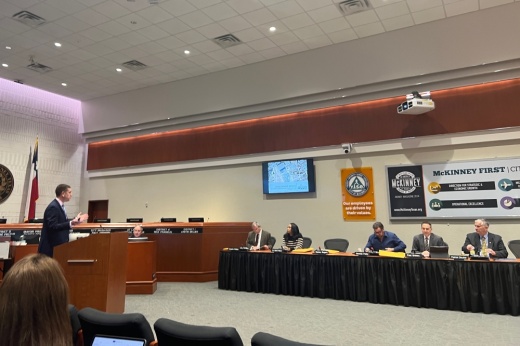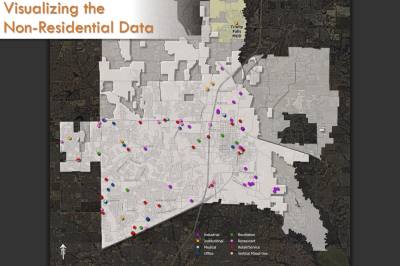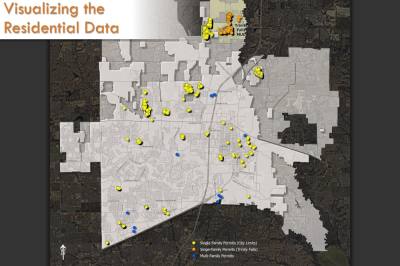The total construction value of all projects in 2022 was over $1.3 billion, which is both the highest in city history and more than double the value of 2021 projects, according to a presentation by Executive Director of Development Services Michael Quint.
Of that value, about $685 million was derived from nonresidential construction. This value is another city record, surpassing the previous high of $373 million in 2020, Quint said. A Raytheon expansion project consisting of one new building represents $216 million of the total value in this category.
“Those of you that have been around the city of McKinney for a while will know that prior [city] councils have said, ‘Hey, we’ve got to preserve and expand that nonresidential tax base,’” Quint said. “Those efforts are coming to fruition; you’re now seeing it.”
These nonresidential projects are concentrated at intersections of arterial roads, Quint said. Such projects include the new city hall, the Raytheon expansion and the development of Hub 121 and District 121, according to Quint.
Residential development in city limits also hit records in 2022. The city issued just over 1,000 permits for single-family residential projects last year, representing about $320 million in construction value. This is the fewest number of single-family residential permits issued in one year since 2010, Quint said.
“I think you’ve seen it nationwide ... just the economy, the uncertainty in the economy is starting to play out in the residential market,” Quint said.
New permits were issued for 10 multifamily residential projects, totaling 2,251 new multifamily dwelling units and a construction value of $339 million, both record highs for the city. These projects are concentrated in east and north McKinney, particularly in McKinney’s extraterritorial jurisdiction, Quint said.
Following statewide reform of how cities can annex land from extraterritorial jurisdiction areas in 2017, the city has faced challenges in developing this area, Quint said. The area is attractive to developers due to the city’s limitations in implementing land use regulations, according to Quint.
The city plans to utilize development partnerships and the recently approved unified development code to incentivize developers to annex their projects in the extraterritorial jurisdiction area into the city’s limits, Quint said.







